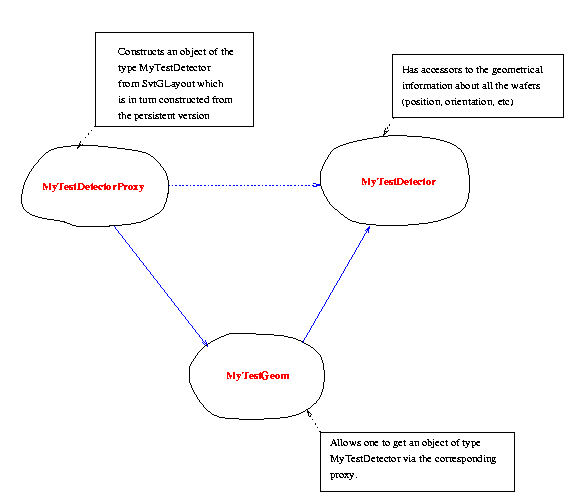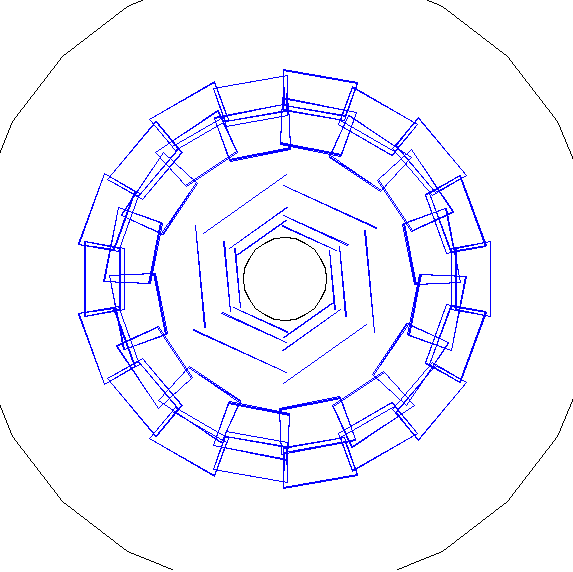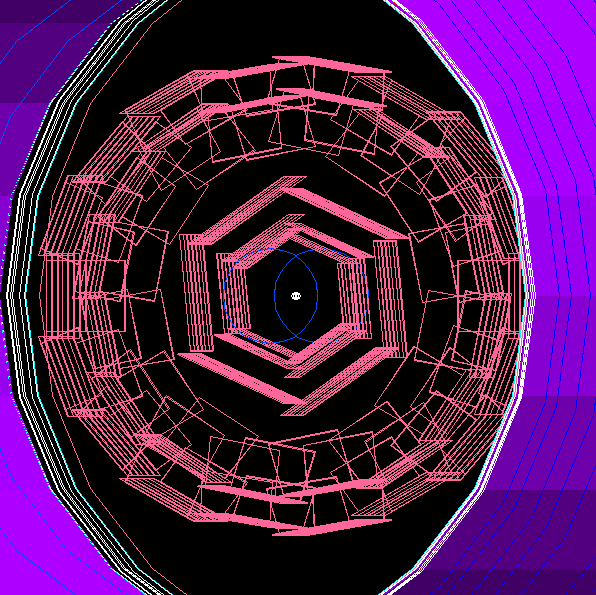BgsSvtSim: current status
Geometry
The picture below shows how the SVT geometry is obtained in the simple model I've been working on. One first obtains a transient object of the type SvtGLayout from the persistent version stored in the SVT conditions database via the usual proxy (I called it MyTestDetectorProxy). One then constructs a "global" detector class which I called MyTestDetector from it. In turn, MyTestDetector has accessors to basic information about the wafers, such as their geometrical parameters, positions, and orientations. A dedicated class, MyTestGeom, adds MyTestDetectorProxy to the environment and allows one to retrieve the object. The following diagram attempts to illustrate the idea:

The problems with linking Bogus with database modules that I mentioned at the previous meeting have been solved.
Results
The following picture shows the geometry used in my model. All the wafer volumes are assumed to be sensitive elements (this will have to be refined in the future), so whenever a particle goes through them it produces hits. The hit structure is very primitive at the moment (they contain nothing but the x, y, and z coordinates at the intersection), but the hits weren't my highest priority for this model (obtaining the geometry from the database was).

Here's the same picture slightly rotated:

(more pretty pictures are available here).
Things to do
-
Optimize the existing structure for the sensitive elements. In particular, we need to agree upon a convention for numbering the wafers.
-
Find an optimal way to store inert SVT objects in the database and retrieve them from it (one way to do this is by writing another proxy similar to the one for the active elements described above, MyTestDetectorProxy).
-
Hit structure. We are trying to work out a unified approach that can be used for both SVT and DCH hits. Specifically for the SVT hits, I see two issues that might require particular care: parametrizing the resolution (a possible way to implement it in terms of cluster width is discussed here) and finding the most convenient wafer numbering scheme for the association of a hit with a particular wafer.
Natalia Kuznetsova natalia@charm.physics.ucsb.edu



